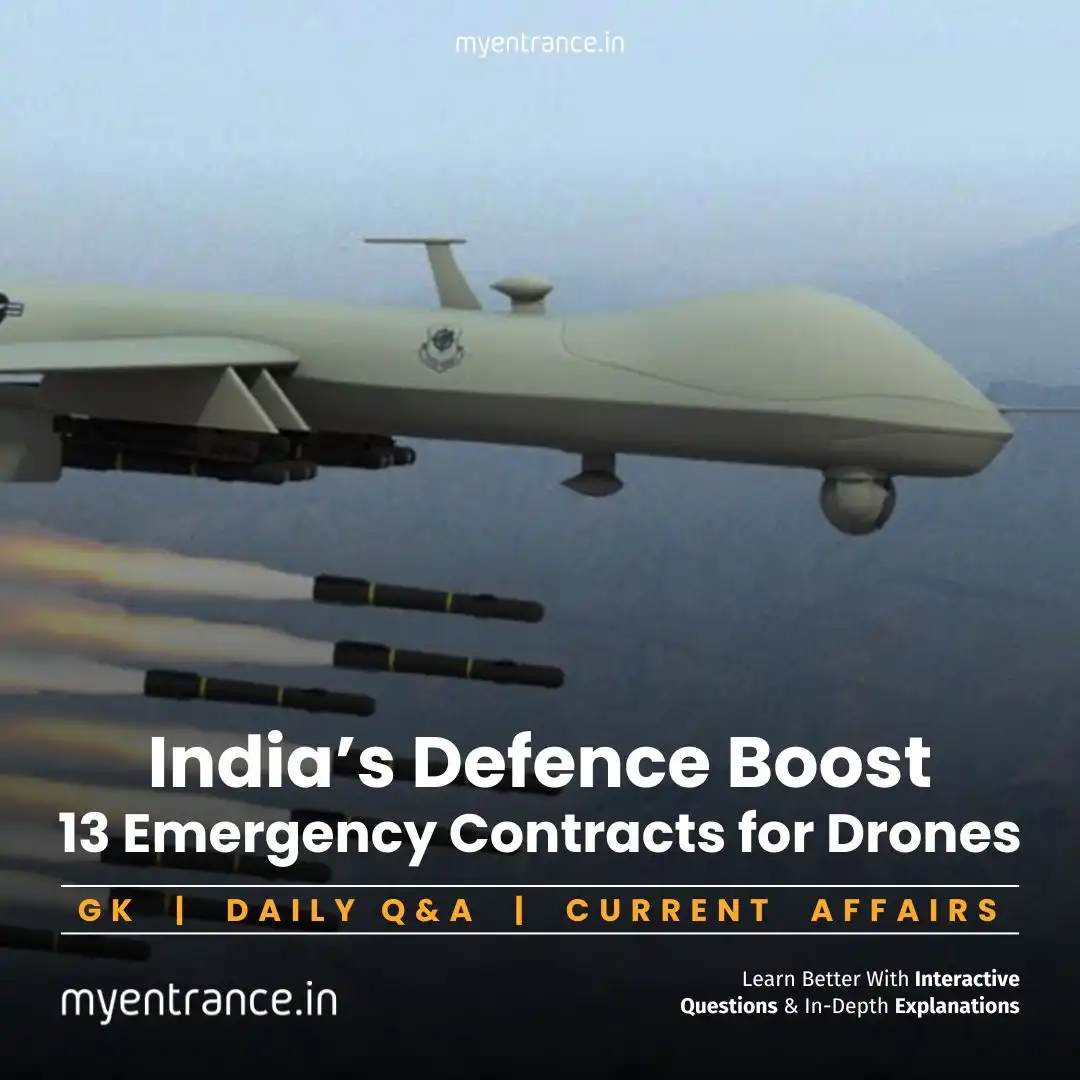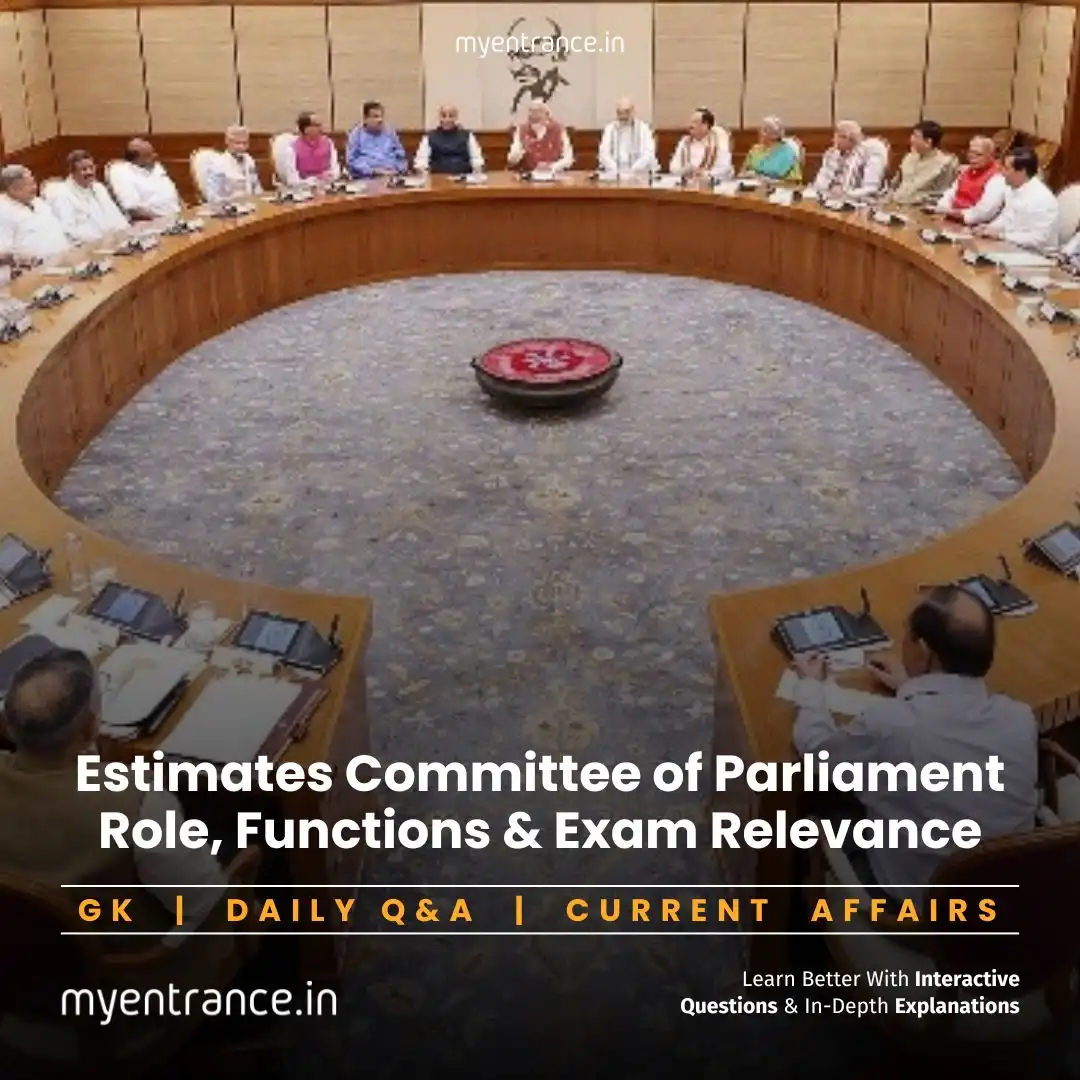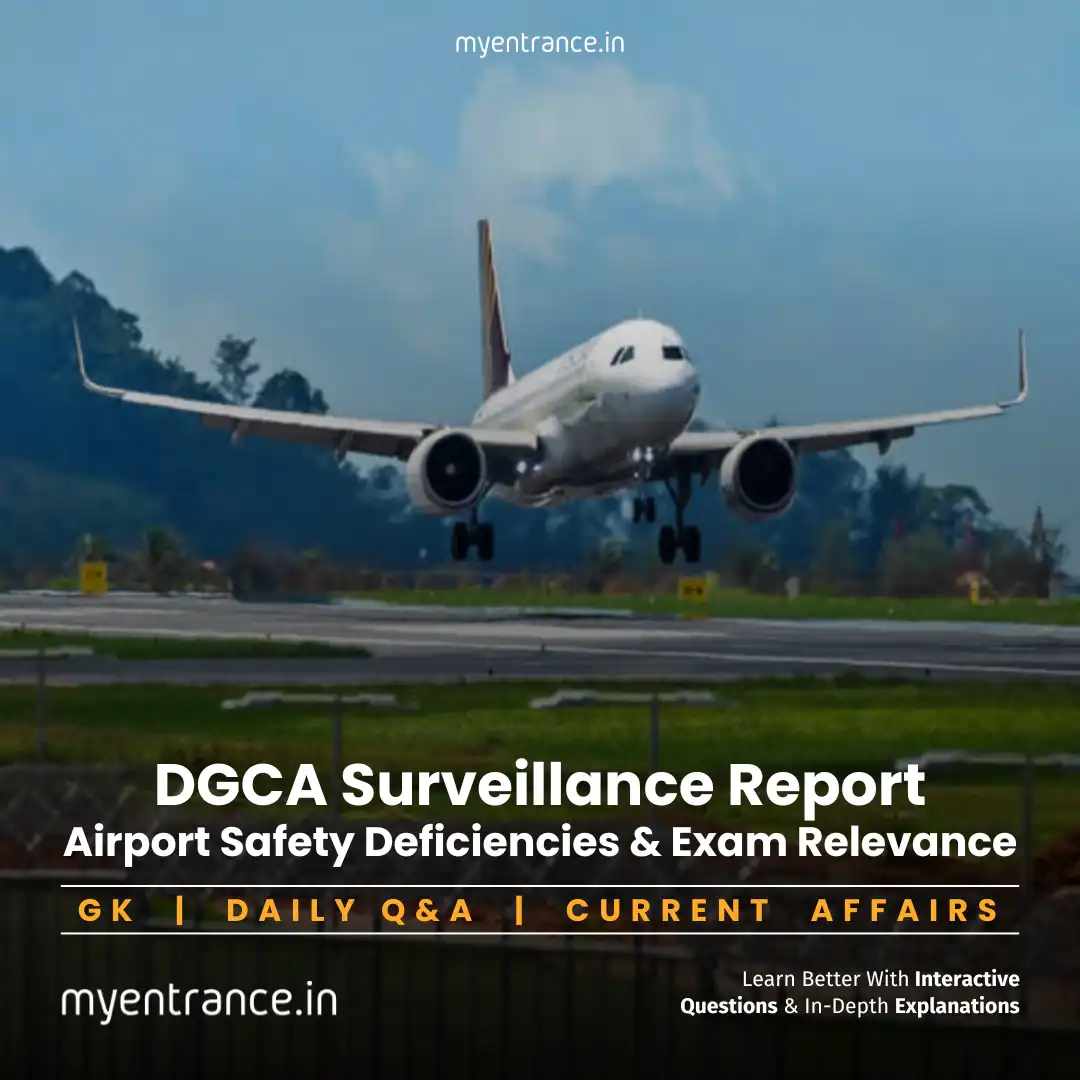Select Language
India’s Defence Boost: 13 Emergency Contracts for Drones, VSHORADs & Loitering Munitions | Current Affairs
In a major defence upgrade, India’s Ministry of Defence signed 13 emergency contracts worth ₹1,981.90 crore for advanced weapons like loitering munitions and counter-drone systems. This move aims to bolster troop capabilities in counter-terrorism operations and accelerate indigenous defence manufacturing.

What’s Driving India’s Emergency Defence Procurement?
Amid heightened border tensions, the Ministry of Defence (MoD) fast-tracked 13 critical contracts under its Emergency Procurement (EP) mechanism. These deals focus on:
Next-Gen Warfare Tools: Loitering munitions, counter-drone systems (IDDIS), and Very Short Range Air Defence Systems (VSHORADs).
Troop Safety: Bulletproof jackets, ballistic helmets, and night-combat equipment.
Enhanced Surveillance: Low-level lightweight radars (LLLR) and Quick Reaction Fighting Vehicles (QRFVs).
Key Defence Tech Explained
Loitering Munitions:
Think “kamikaze drones”: These are crossbreed weapons between drones and missiles. They can hover over targets for hours, strike with precision, and are cheaper than conventional missiles.
UPSC Relevance: Differ from UAVs (surveillance) and cruise missiles (long-range, non-loitering).
VSHORADs (Very Short Range Air Defence Systems):
Man-portable missiles designed to destroy low-flying aircraft/ drones within 6 km. Critical for mountain warfare (e.g., Ladakh).
Counter-Drone Systems (IDDIS):
Detect and neutralize hostile drones using jammers, lasers, or nets. Vital after recent drone attacks in Jammu.
Why This Matters for Exams
‘Make in India’ Push:
90% of procured systems are indigenous, aligning with Defence Acquisition Procedure (DAP) 2020.
DAP 2020 prioritizes domestic manufacturing, private sector participation, and reducing import dependency.
Strategic Autonomy:
Emergency procurements (since 2019 Balakot airstrikes) cut bureaucratic delays. Recent deals were finalized in under 3 months.
Lessons from Conflicts:
Post-Ukraine war, swarm drones and loitering munitions proved decisive. India’s procurement mirrors global trends.
Challenges & Way Forward
Limitations: Emergency buys may sideline long-term planning. Over-reliance on simulations during testing could overlook real-world flaws.
Opportunities: Boost R&D via Innovations for Defence Excellence (iDEX), integrate startups (e.g., drone tech firms).
Sample Q&As for Exam Prep
Q: How do loitering munitions differ from traditional missiles?
A: They can hover and surveil targets before striking, offering flexibility, while missiles follow pre-programmed paths.
Q: What operational advantage do VSHORADs provide to the Indian Army?
A: They offer man-portable, rapid-reaction air defence against low-altitude threats in high-altitude terrains like Ladakh.
Q: Which defence policy promotes indigenous manufacturing under DAP 2020?
A: The ‘Buy Indian-Indigenously Designed, Developed and Manufactured (IDDM)’ category.
Q: Name two systems procured under MoD’s latest emergency contracts.
A: Integrated Drone Detection Systems (IDDIS) and Vertical Take-Off Loitering Munitions.
Q: Why was the Emergency Procurement mechanism activated?
A: To bypass lengthy procedures during crises like the 2020 Ladakh standoff and 2019 Balakot operations.
Most Predicted Questions
Comprehensive study materials, Expert-guided tips & tricks, Mock tests and instant results.
Start your SSC, NIFT, NID, FDDI, PSC journey today with MyEntrance, your ultimate online coaching platform.















